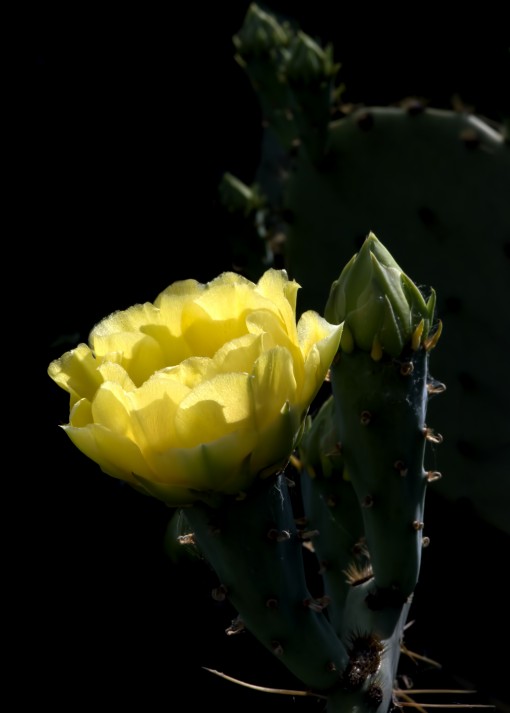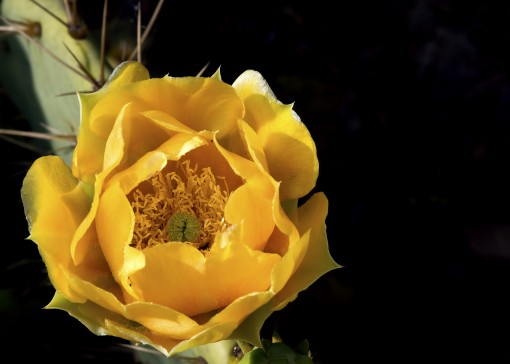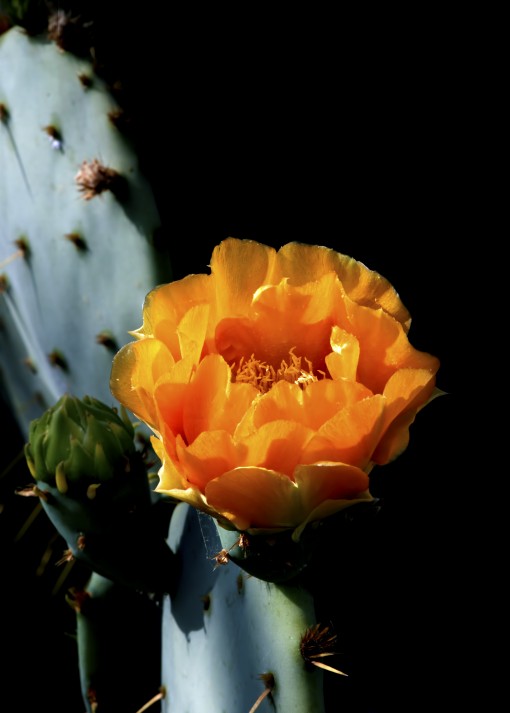Thorny and Prickled – the State Plant of Texas
May 3, 2014 | By Shoal Creek Conservancy
This blog post was written by Ted Lee Eubanks. To learn more about the author, please visit this site.

Prickly pear is the official state plant of Texas. I didn’t know until now, even though the state designated the plant in 1995. Prickly pear? The cactus with spines that rake your shins, and the prickles that find their way onto your clothes and into your skin? That prickly pear? That godforsaken pest?
Prickly pear, an Opuntia, is spread throughout the Shoal Creek watershed. Prickly pear is not an uncommon yard plant, particularly in older neighborhoods such as Clarksville. I have noticed a number of different types of prickly pear being cultivated in local yards, such as the “cow tongue” cactus, Opuntia engelmannii var. linguiformis.
I always assumed that the people who plant prickly pear have no pets or children. Prickly pear is a fortress of spines and prickles. The spines are two to three inches long and needle sharp. The prickles, called glochids, are arranged around the base of each spine. These prickles are nearly invisible and virtually impossible to extract from the skin. I can remember sitting under the dim kitchen light as my grandfather tried to scrape the prickles from my hand with his pocket knife.
Prickly pear has been valued for food by people since the beginning of time. The Karankawa Indians along the Texas coast would feast on the fruit, called “tunas,” when in season. Mexicans consume the pads, called nopales, by slicing them into thin nopalitos. There is an alchoholic drink, colanche, that originated with the Nahuatl (in fact, the word nopal is Nahuatl for pad). Tunas are used in agua frescas, candy, jelly, and even cheese (queso al tuna).

I doubt that our prickly pears are being harvested, although there are stores on the east side of Austin where one can buy nopales and tunas. I suspect that most of the prickly pears in the watershed are volunteers. For most of year they are ignored, except when a person or pet brushes against a pad and arrives home with a punctured leg or a pricked finger.
Only once a year does this cactus request notice. The flowers of the prickly pear are among the most striking that we see in the Hill Country. The flowers are the size of tea cups, and their intense yellow or orange color punctuates the landscape and demands attention.
There is a small clump of prickly pear in Pease Park on the east side of Shoal Creek near the volleyball pits. These cacti are currently in bloom, and I spent time photographing the various flowers earlier this week. The flowers vary from lemon-yellow to deep-orange, often on the same plant. I cannot think of a native Texas plant more appropriate for Shoal Creek than the prickly pear. Our conservation efforts along the creek will ensure that native plants such as this cactus continue to flourish here. With your help, we can do this.

